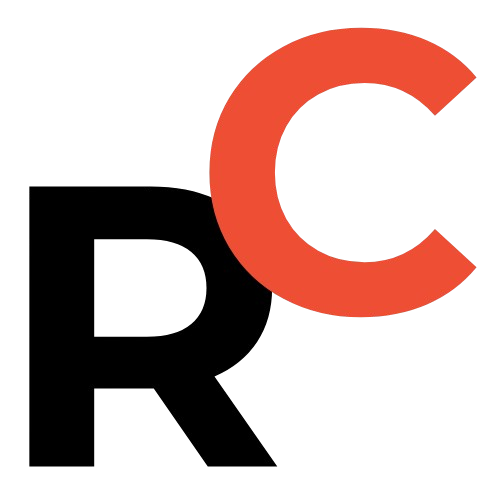Key Points
- China is heavily supporting the Brain-Computer Interface (BCI) industry with coordinated regional and national policies aiming to make BCI a national innovation hub.
- Specific provincial plans like the one in Sichuan aim for significant clinical adoption by 2030, including 3,000 annual invasive BCI surgeries and reaching over 100,000 patients per year.
- Regulatory bodies like the NMPA (Guojia Yaojianju 国家药监局) are streamlining approvals and improving standards for BCI medical devices, potentially fast-tracking innovative products.
- Hubei Province led the nation by establishing the first official pricing for BCI medical services (e.g., ¥6,552 RMB for invasive BCI implantation), providing a crucial policy guarantee for clinical use.
- The global BCI market is projected to explode from $1.98 billion USD (2023) to over $6 billion USD by 2028 (25.22% CAGR), with China’s market currently accounting for less than one-tenth but predicted to grow to over ¥120 billion RMB by 2040.

Heads up, tech enthusiasts and investors! The Brain-Computer Interface (BCI) industry is seriously picking up speed, moving from sci-fi dreams to real-world applications faster than you can say “neurotechnology.”
We’re seeing a perfect storm of groundbreaking R&D, major policy support, and an accelerating push towards commercialization.
🚀 Government Rocket Fuel: How Policy is Turbo-Charging BCI Development in China
It’s clear that China is putting serious muscle behind the BCI industry. Think coordinated efforts, big goals, and a clear roadmap.
Just on May 12, 2025, eight departments, including the Sichuan Provincial Department of Economy and Information Technology (Sichuan Sheng Jingji he Xinxihua Ting 四川省经济和信息化厅), rolled out the “Sichuan Province Brain-Computer Interface and Human-Computer Interaction Industry攻坚突破 Action Plan (2025—2030).”
Their ambition? To make Sichuan a national innovation hub for BCI and human-computer interaction.
Sichuan’s Big BCI Bets for 2030:
- Annual execution of 3,000 invasive BCI surgeries.
- BCI tech products and services to reach over 100,000 patients per year dealing with neurodegenerative diseases, mental illnesses, and addiction (drug or digital).
- Rehabilitation equipment usage by over 20,000 individuals annually.
- Aggressively promote BCI in diverse areas like industrial manufacturing, healthcare, and emergency safety to boost adoption of next-gen human-computer interaction.
And Sichuan isn’t alone. Regions like Beijing, Shanghai, and Guangdong have all recently launched policies to supercharge BCI development.
Plus, the tech itself is evolving rapidly, with industry standardization efforts keeping pace.
A key development: China’s first online platform for “BCI Patents and Intellectual Property” just went live. That’s a big deal for protecting innovation.

Find Top Talent on China's Leading Networks
- Post Across China's Job Sites from $299 / role
- Qualified Applicant Bundles
- One Central Candidate Hub
Your First Job Post Use Checkout Code 'Fresh20'

Nationwide Policy Momentum: A Coordinated Push
The start of 2025 saw a flurry of policy action across China:
-
Beijing (January 2025): Launched its “Action Plan for Accelerating Innovation and Development of Brain-Computer Interfaces in Beijing (2025-2030).”
The focus? Beefing up financial support, encouraging government and investment funds to get in on the early-stage BCI action. More money, more innovation.
-
Shanghai: Unveiled its “Action Plan for Cultivating the Future Industry of Brain-Computer Interfaces in Shanghai (2025—2030).”
Shanghai’s game plan involves tackling cutting-edge scientific challenges head-on.
They’re even setting up a “scientists + entrepreneurs + investors” decision-making group to fast-track strategic projects and boost collaborative R&D. Smart.
Streamlining Approvals and Setting Standards
On March 31, 2025, the National Medical Products Administration (NMPA) (Guojia Yaojianju 国家药监局) dropped a game-changer: the “Measures for Optimizing Full Lifecycle Regulation to Support the Innovation and Development of High-End Medical Devices (Draft for Comment).”
Here’s what’s important:
- Optimizing special approval procedures – cutting red tape for innovative devices.
- Strengthening registration guidance for products from “揭榜挂帅” (Jiebǎng Guàshuài – a competitive mechanism to select top talent/projects) in AI and biomaterials. Think fast-tracking the best ideas.
- Working with other departments on support policies for BCI-based medical devices.
- Improving the standards system, including research on new biomaterials like flexible BCI electrodes. Standards are crucial for safety and interoperability.
Show Me the Money: BCI Pricing Becomes a Reality
Perhaps one of the most significant recent moves came from the Hubei Provincial Healthcare Security Administration at the end of March 2025.
They took the lead by releasing the nation’s first pricing for BCI medical services.
This is huge because it connects the “last mile” for BCI in actually helping patients.
Here’s the breakdown:
- Invasive BCI implantation fee: ¥6,552 RMB (approximately $906.22 USD) per procedure.
- Invasive BCI removal fee: ¥3,139 RMB (approximately $434.16 USD) per procedure.
- Non-invasive BCI adaptation fee: ¥966 RMB (approximately $133.61 USD) per session.
As Pacific Securities (Taipingyang Zhengquan 太平洋证券) noted, this provides crucial policy guarantees for the clinical use of BCI, paving the way for high-level medical innovations to reach patients. This makes commercialization tangible.

ExpatInvest China
Grow Your RMB in China:
- Invest Your RMB Locally
- Buy & Sell Online in CN¥
- No Lock-In Periods
- English Service & Data
- Start with Only ¥1,000

🧠 Mind-Blowing Tech: The R&D Powering the BCI Revolution
Policy is one thing, but the actual technology is where the magic happens. And BCI tech is advancing at a dizzying pace.
Take Jieti Medical (Jieti Yiliao 阶梯医疗), for example.
They recently announced incredible results from a prospective clinical trial of their ultra-flexible minimally invasive implantable BCI system.
A test subject, who had tragically lost all four limbs due to a high-voltage electric shock, was able, just one month after electrode implantation in the brain’s motor cortex, to:
- Skillfully “click” a mouse using thought.
- Play Gomoku (Five-in-a-Row).
- Even play Mario Kart!
Absolutely stunning progress. 🙏
Zhao Zhengta (Zhao Zhengta 赵郑拓), founder of Jieti Medical (Jieti Yiliao 阶梯医疗) and a researcher at the Center for Excellence in Brain Science and Intelligence Technology, Chinese Academy of Sciences (Zhongguo Kexueyuan Naozhi Zhuoyue Zhongxin 中国科学院脑智卓越中心), shared with China Securities Journal (Zhongguo Zhengquan Bao 中国证券报):
“The team is currently conducting post-operative brain-control training for the subject. What we’ve released are the preliminary training results from the first month; the entire training process will last 3-6 months, and we will continue to release results.”
This kind of transparency and continuous reporting is key for building trust and momentum.
Understanding BCI: Types and Challenges
BCI technology isn’t a one-size-fits-all solution. It features diverse technical pathways and is currently in a phase of accelerated technological transformation.
Based on how signals are acquired and outputted, BCI tech can be broadly categorized into:
- Invasive BCI: Electrodes are placed directly on or in the brain. Offers the highest signal quality but requires surgery. (Think Neuralink or Jieti Medical’s (Jieti Yiliao 阶梯医疗) implant).
- Semi-invasive BCI: Electrodes are placed on the brain’s surface, under the skull. Less risky than fully invasive but still requires surgery.
- Non-invasive BCI: Sensors are placed on the scalp (like EEG caps). Easiest to use, no surgery, but signals can be noisy and less precise.
The core technical hurdles in BCI are mainly concentrated in the upstream (components) and midstream (system integration) of the industry chain. These include:
- Hardware: Developing better electrodes (more durable, biocompatible, higher resolution) and specialized chips for signal processing.
- BCI Surgery: For invasive methods, making procedures safer, less invasive, and more accessible.
- Brainwave Signal Acquisition, Processing, and Analysis: This is the “secret sauce” – accurately capturing faint brain signals, filtering out noise, and translating them into commands using sophisticated algorithms and AI.
What Can BCI Do? The Expanding Applications
The main functions of BCI technology are incredibly versatile and can be summarized as:
- Monitoring: Observing brain activity for diagnostics (e.g., detecting seizures).
- Substitution: Replacing lost functions (e.g., controlling a prosthetic limb with thought).
- Improvement/Restoration: Helping to recover or enhance impaired functions (e.g., neurorehabilitation after a stroke).
- Enhancement: Augmenting normal human capabilities (still highly experimental, but a long-term vision).
- Supplementation: Adding new capabilities (e.g., a “third arm” controlled by brain signals).
The application scenarios are vast, but the medical field is currently king.
In China, medical applications accounted for a whopping 56% of BCI uses in 2023.
Within medicine, BCI is primarily focused on:
- Diagnosis and treatment of consciousness and cognitive disorders.
- Mental illness diagnosis and treatment.
- Motor dysfunction diagnosis and treatment (a big focus for paralysis).
- Sensory deficit diagnosis and treatment (e.g., restoring some forms of vision or hearing).

Resume Captain
Your AI Career Toolkit:
- AI Resume Optimization
- Custom Cover Letters
- LinkedIn Profile Boost
- Interview Question Prep
- Salary Negotiation Agent

📈 Market Mania: Sizing Up the BCI Gold Rush
The BCI industry isn’t just about cool tech; it’s about a massive market opportunity.
According to forecasts by Qianzhan Industry Research Institute (Qianzhan Chanye Yanjiuyuan 前瞻产业研究院):
- The global BCI market hit $1.98 billion USD in 2023.
- It’s projected to EXPLODE to over $6 billion USD by 2028.
- That’s a five-year compound annual growth rate (CAGR) of a staggering
25.22%. Hold on to your hats!
While healthcare is the most mature sector for BCI globally, China’s BCI market is still in its early innings but poised for explosive growth.
- The current market scale of BCI devices in China is in the billions of RMB range (which translates to hundreds of millions of USD, starting from roughly $138 million USD if we consider one billion RMB as a baseline).
- This accounts for less than one-tenth of the global market share. Talk about room to grow!
- Institutions are predicting that China’s comprehensive BCI market scale could skyrocket to over ¥120 billion RMB (approximately $16.60 billion USD) by 2040, with an average annual CAGR of about 26%.
The message is clear: China is set to become a BCI superpower.

🤝 Companies Making Moves: Who’s Who in the BCI Arena
It’s not just startups and research labs. Listed companies are increasingly throwing their hats into the BCI ring, primarily eyeing downstream solutions and applications.
Here are a couple of examples:
-
Vishee Medical (Weisi Yiliao 南京伟思医疗科技股份有限公司):
They recently highlighted their rich portfolio in non-invasive BCI. Think products for group biofeedback, multi-parameter biofeedback, and neonatal EEG monitoring.
Plus, they’ve racked up dozens of BCI-related patents. Serious IP play.
-
Xiangyu Medical (Xiangyu Yiliao 河南翔宇医疗设备股份有限公司):
They’ve independently developed a BCI series featuring multiple wireless EEG acquisition systems.
These systems support up to 256 channels, covering most rehab application needs.
What’s super exciting? They’re also developing products that combine BCI with exoskeleton robots. The future is now!

🔮 The Analyst Angle: What’s Next for BCI?
So, what do the financial gurus think?
CSC Financial (Zhongxin Jiantou 中信建投证券股份有限公司) believes that while BCI technology is still in its early developmental stages, its R&D and application potential are enormous.
Their prediction? BCI products are expected to hit the market and achieve gradual commercialization in the next 3-5 years.
This timeline aligns with the rapid advancements and policy support we’re seeing.
The convergence of policy, R&D breakthroughs, and growing investment is creating an incredibly fertile ground for the Brain-Computer Interface industry.
From helping patients regain lost abilities to potentially redefining human-computer interaction, the impact of BCI will be profound.
It’s a space brimming with opportunity, and if the current trajectory holds, the BCI revolution isn’t just coming – it’s already begun, and keeping an eye on Brain-Computer Interface (BCI) developments will be crucial for anyone in tech and investment.

References
- 技术研发持续突破 脑机接口行业商业化提速 – 中国证券报 (China Securities Journal)
- The Next Interface Is No Interface: Inside The $2.7B Brain Computer Interface Market – Forbes
- Everything we know about Elon Musk’s Neuralink – MIT Technology Review
- Walking naturally after spinal cord injury using a brain–spine interface – Nature Medicine



